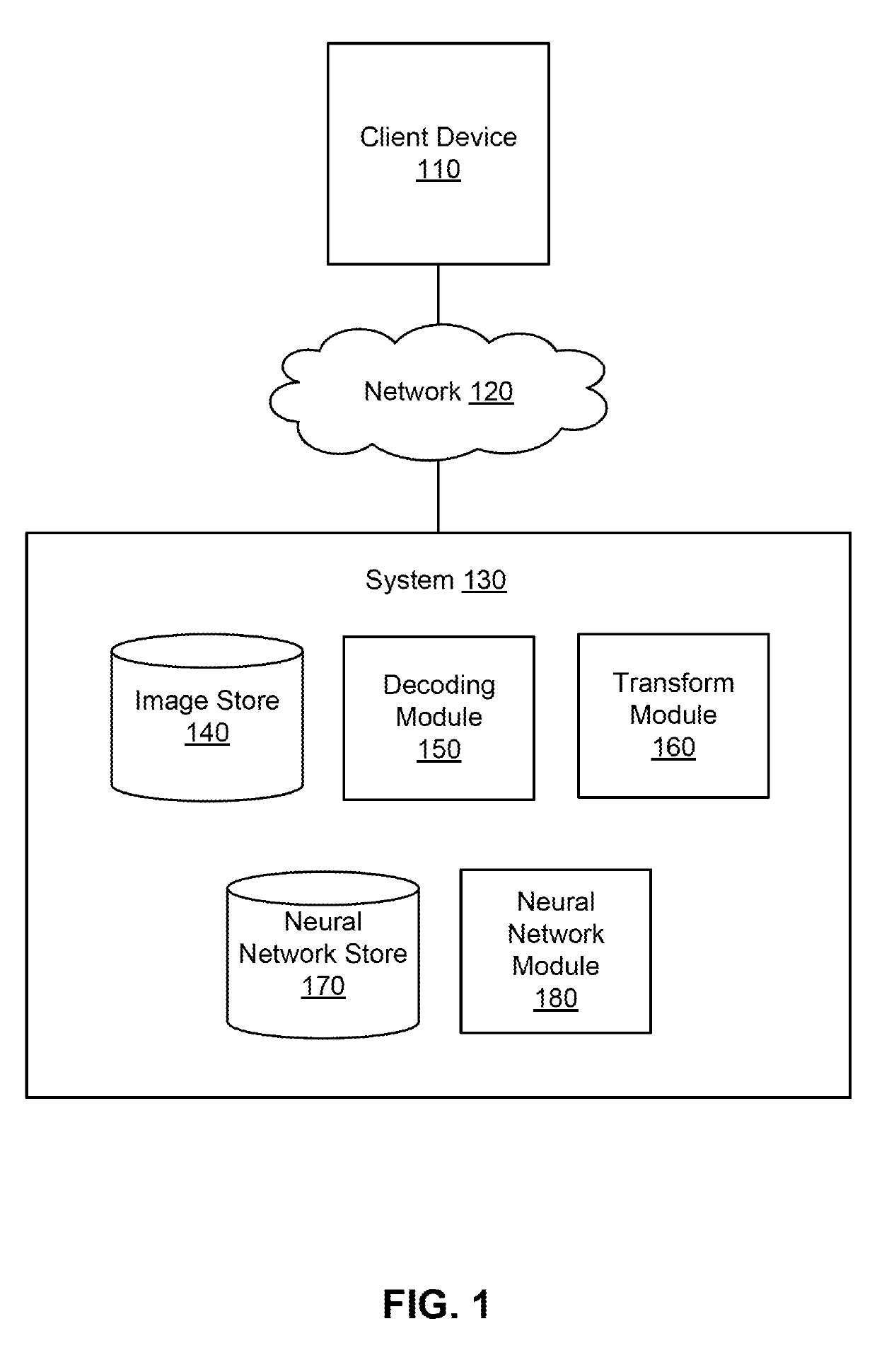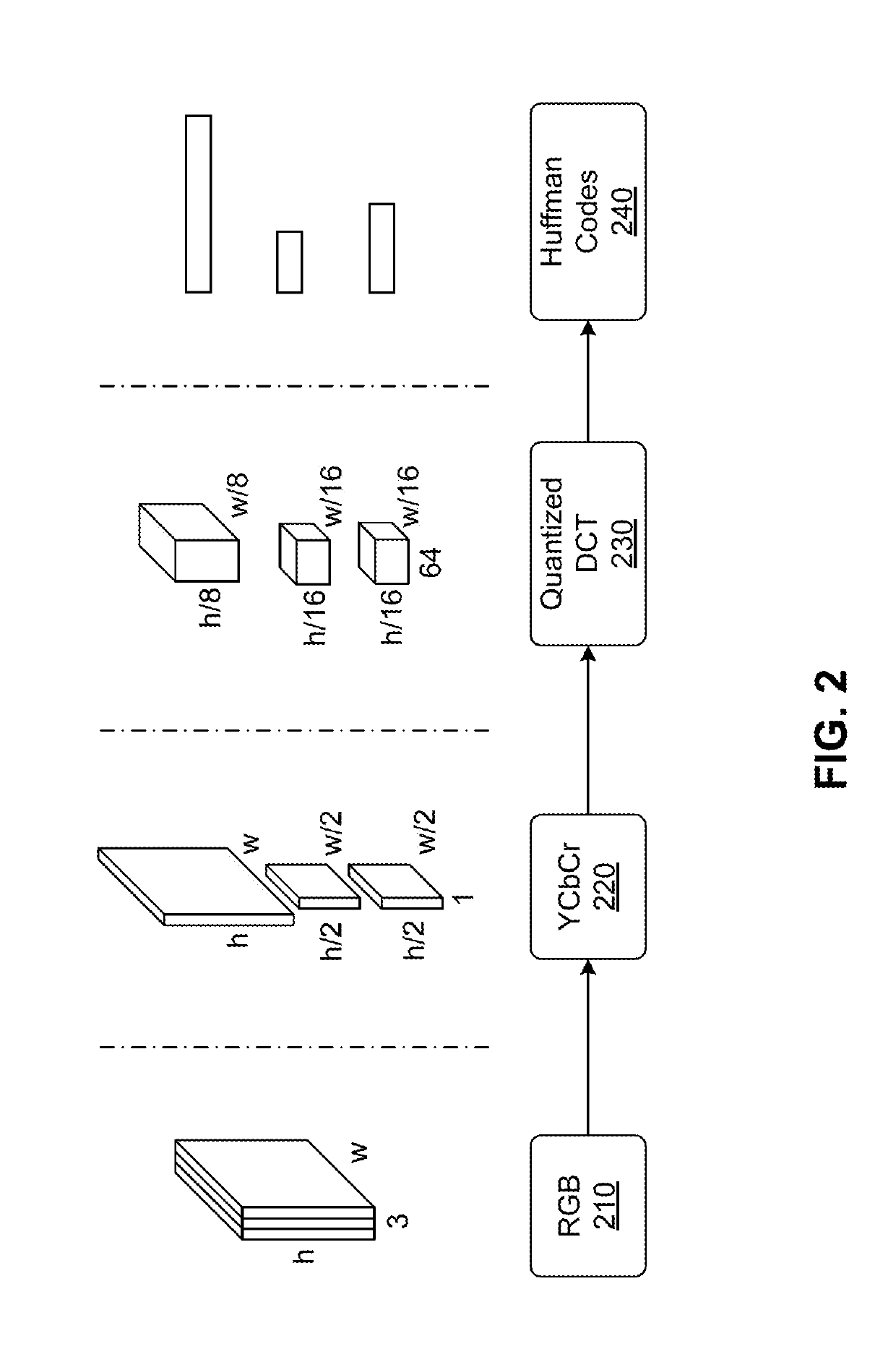Leveraging JPEG discrete cosine transform coefficients in neural networks
- Summary
- Abstract
- Description
- Claims
- Application Information
AI Technical Summary
Benefits of technology
Problems solved by technology
Method used
Image
Examples
Embodiment Construction
[0016]A system performs image processing using a neural network that accepts partially compressed images as input. Although many examples described herein relate to compressed images and convolutional neural networks, such a system could be used to analyze a variety of data formats using different compression standards and neural network architectures.
[0017]The system receives a compressed image for analysis. For example, the image may be compressed according to a Joint Photographic Experts Group (JPEG) compression standard. Rather than decompressing the image file completely prior to analysis, the system only partially decompresses the image into sets of discrete cosine transform (DCT) coefficients, also referred to as the quantized DCT values. For a color image, the decompression process may include applying a decoding algorithm (e.g., using Huffman codes) to convert the compressed image file into three DCT values, including one for a luma component and two for chromatic component...
PUM
 Login to View More
Login to View More Abstract
Description
Claims
Application Information
 Login to View More
Login to View More - R&D
- Intellectual Property
- Life Sciences
- Materials
- Tech Scout
- Unparalleled Data Quality
- Higher Quality Content
- 60% Fewer Hallucinations
Browse by: Latest US Patents, China's latest patents, Technical Efficacy Thesaurus, Application Domain, Technology Topic, Popular Technical Reports.
© 2025 PatSnap. All rights reserved.Legal|Privacy policy|Modern Slavery Act Transparency Statement|Sitemap|About US| Contact US: help@patsnap.com



